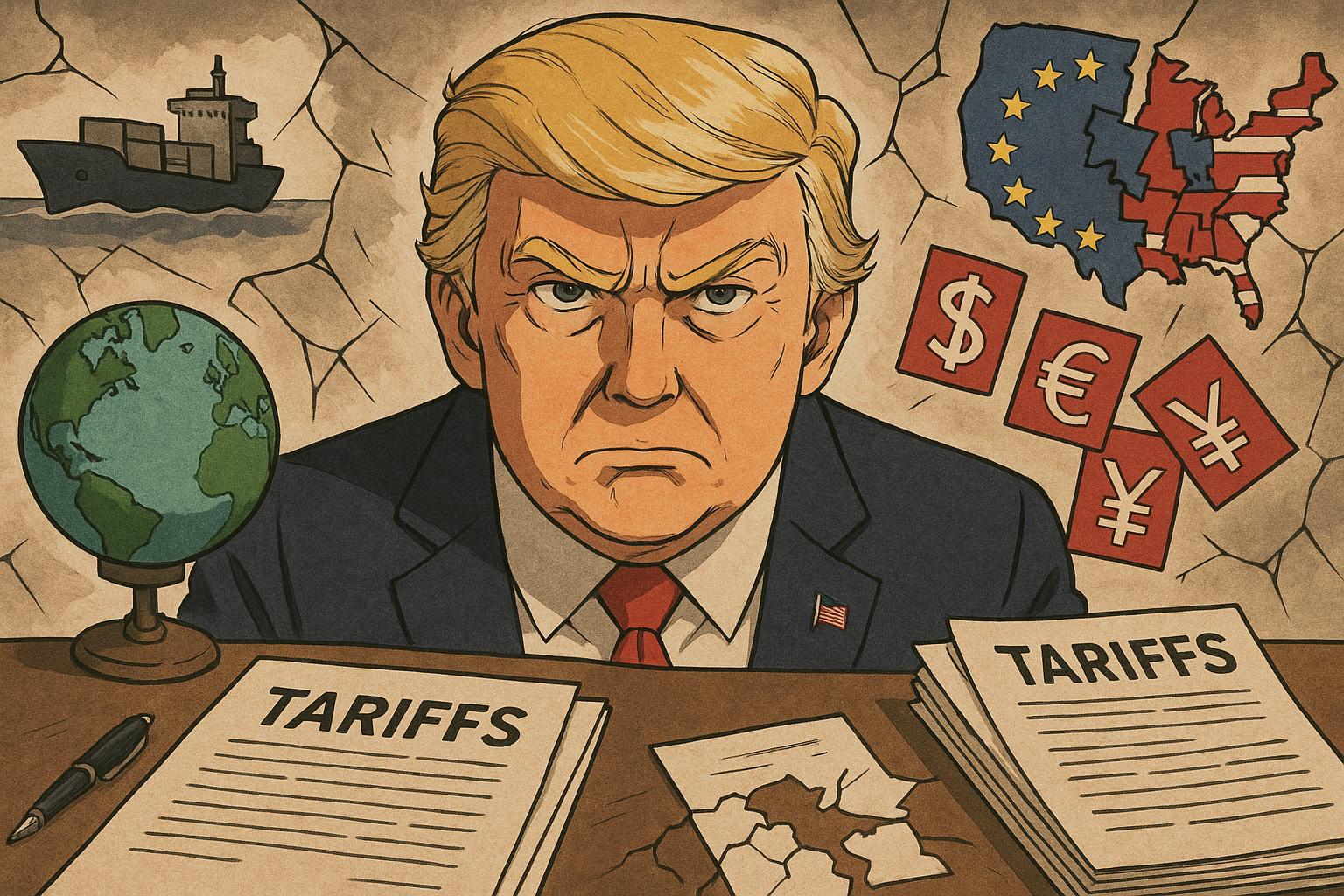Hello and welcome to this edition of Trade Secrets. Governments around the world are navigating the complex and often confusing landscape of international trade, particularly in light of recent developments involving United States President Donald Trump’s controversially termed “reciprocal tariffs.” Initially announced on April 2, these tariffs were purportedly suspended for 90 days pending negotiations. However, the responses from various nations have ranged from tentative agreements to outright scepticism, reflecting the broader uncertainty in global trade dynamics.
As analysts and policymakers consider the implications of these tariffs, the response from the trade community has been notably muted. Many are questioning whether Trump’s threats carry any weight in influencing policy decisions. Biased by an overwhelming sense of uncertainty surrounding his administration’s trade intentions, decision-makers are hesitant to react decisively. For instance, while Trump proclaimed potential tariffs on various countries, trade experts and financial markets barely registered the announcement, indicating a deep-seated scepticism about the administration’s commitment to these threats.
The situation is compounded by the lack of a coordinated international response to Trump’s policies. Instead of a united front, countries appear to be pursuing their own interests in fragmented discussions. Recent dialogues among Asia-Pacific nations in the Comprehensive and Progressive Agreement for Trans-Pacific Partnership (CPTPP) and the Association of Southeast Asian Nations (ASEAN) yielded non-committal promises of cooperation, highlighting a pervasive lack of trust in multilateral negotiations.
In the UK, the absence of adherence to multilateralism has raised eyebrows. The current government has accepted a trade agreement that contradicts the “most-favoured nation” principle, ultimately leading to ambiguous alliances against China. This precarious position has attracted criticism from both domestic and international observers. The European Union voiced concerns over the thinness of the UK’s trade arrangements, while Beijing cautionarily advised London against taking sides amidst escalating U.S.-China tensions.
In this volatile context, the broader economic implications of Trump’s tariffs deserve scrutiny. Historical parallels suggest that protective measures often result in unforeseen consequences for both the imposing nation and its trading partners. For example, renowned historian Harold James emphasizes that Trump’s policies risk undermining American consumer welfare and technological advancement while potentially fuelling a new wave of globalisation driven by emerging markets. As countries navigate these tumultuous waters, many economists argue that the long-term costs of tariffs may far exceed any short-term gains.
Governments are weighing their decisions carefully, with the EU, for instance, showing reluctance to hastily negotiate with the U.S. Brussels has resolutely indicated its refusal to accept the proposed 10 per cent baseline tariff without proportional retaliation. Analogously, Australia has expressed eagerness to strike a deal with the U.S. but remains wary of antagonising China—reflecting its significant trade dependency on the latter.
The relationship between costs associated with tariffs and consumer behaviour is also coming under increasing scrutiny. Recent assessments reveal that tariffs have a direct impact on American households, with estimates indicating an annual financial burden exceeding $2,300 for the average family. This situation has catalysed discussions among businesses regarding how the financial strain should be managed, with some retailers like Walmart feeling the pressure to adjust pricing strategies in light of tariff-induced costs.
Respondents to recent inquiries regarding the UK and China’s agreements with the U.S. exhibited a similar scepticism. Not only did many critics dismiss the viability of these deals, but they also suggested that the UK missed opportunities by not aligning more closely with the EU, while asserting that China could have extracted more favourable terms from the U.S.
As we navigate these complicated discussions, it’s essential to understand how global trade patterns could evolve. Economic relationships are increasingly interdependent, and the ramifications of policies framed in isolation—such as Trump’s tariffs—could lead to broader shifts in alliances and trade dynamics. Ultimately, countries must remain vigilant, balancing national interests with the emergent realities of global economic interconnectivity.
Charted waters portray a notable trend: the EU is currently experiencing a burgeoning trade surplus with Ukraine, a position paradoxically marred by intentions to restrict imports to protect its farmers, further complicating the narrative of global trade relationships.
In conclusion, as nations continue to recalibrate their strategies in response to shifting dynamics, it remains imperative to address both the practical and ideological considerations that underpin trade policy. As uncertainties pervade, the global economic landscape remains a canvas for new alliances, challenges, and evolving priorities.
Reference Map
- Paragraphs 1, 2
- Paragraphs 2, 4
- Paragraphs 4, 5
- Paragraphs 5, 6
- Paragraph 6
- Paragraphs 6, 7
- Paragraph 7
Source: Noah Wire Services
